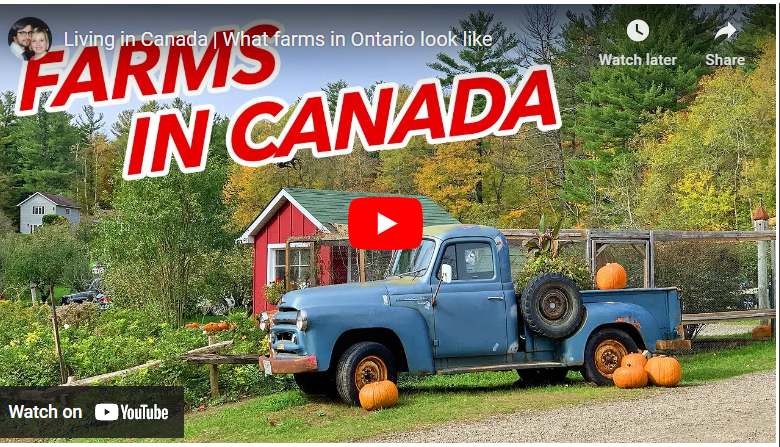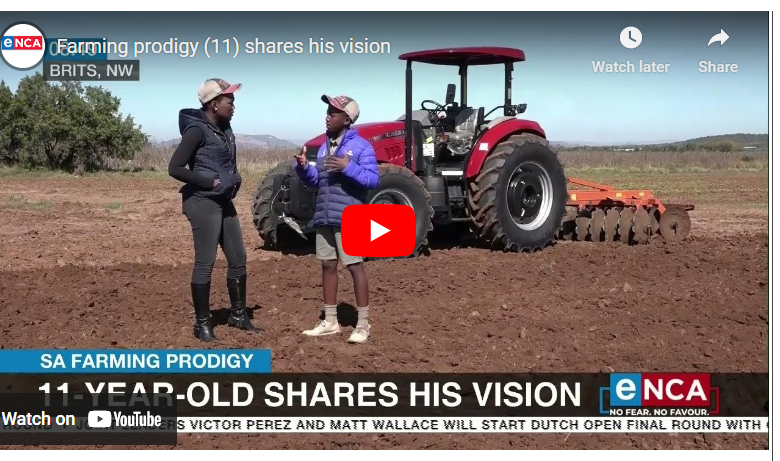Farming is an important industry in Australia, with a long and proud history. Despite facing challenges such as climate change, water scarcity, and competition from other countries, the farming sector in Australia has managed to remain profitable and sustainable.
So, here are some of the richest Farmers in Australia Gina Rinehart, Andrew ‘Twiggy’ Forrest, Kerry Stokes, Michael Hintze, Brett Blundy, Paul Lederer, Allan Myers, Peter Hughes and family and Graham Turner
Richest Farmers In Australia
Australia is a home of wealthy farmers. For those who are interested, it is worth mentioning that the farmers who have achieved the highest net worth in Australia, as outlined in this piece, have primarily focused on livestock farming either as a primary source of income or as part of their business niche.
Read Also: Richest Poultry Farmers In Uganda [Top 6 Ranked]
Here is the list of the top 12 richest farmers in Australia:
List Of Most Successful Farmers In Australia
#1. Gina Rinehart
Net Worth: $36.28billion
Gina Rinehart is the richest farmer in Australia, with an estimated net worth of $36.28 billion. Rinehart inherited a stake in her father’s mining company, Hancock Prospecting, and has since expanded the company’s operations into the agriculture industry.
Rinehart owns a vast network of pastoral properties and agricultural enterprises throughout Western Australia, and she has become a leading figure in the beef cattle industry.
Read Also: Top 5 Richest Dairy Farmers In India
Rinehart is also known for her philanthropic efforts, particularly in the areas of medical research and indigenous education.
#2. Andrew ‘Twiggy’ Forrest
Net Worth: $29.61billion
Andrew Forrest, also known as ‘Twiggy’, is the second-richest farmer in Australia, with an estimated net worth of $29.61 billion.
Forrest made his fortune in the mining industry but has since diversified his portfolio to include investments in the agriculture industry.
Forrest owns a 40,000-hectare farm in Western Australia, which is one of the largest vertically integrated cattle operations in the world.
Read Also: Top 5 Richest Diary Farmers In Kenya
He has also invested in the development of a new breed of cattle, the Wokalara, which is known for its high-quality meat and resistance to harsh environmental conditions.
#3. Kerry Stokes
Net Worth: $7.26billion
Kerry Stokes is the third-richest farmer in Australia, with an estimated net worth of $7.26 billion. Stokes is a media mogul and businessman who has made significant investments in the agriculture industry.
He owns a number of pastoral properties throughout Western Australia, including the 1.6 million-acre Yakka Munga station.
Read Also: Top 5 Richest Diary Farmers In South Africa
Stokes is also the chairman of the Seven Group Holdings, which has interests in agriculture, mining, and construction.
#4. Michael Hintze
Net Worth: $3billion
Michael Hintze is the fourth-richest farmer in Australia, with an estimated net worth of $3 billion. Hintze is a hedge fund manager who has made significant investments in the agriculture industry.
Michael Hintze, through his company MHPF group, operating in Australia under the name MH Premium Farms, has built a significant agricultural portfolio in the country.
Read Also: Top 10 Richest Diary Farmers In The World
Since 2007, MHPF has acquired more than 41 properties, covering a total of 70,000 hectares, in various strategic locations across different climatic regions.
The company operates in multiple sectors such as beef, prime lambs, wool, broadacre cropping, irrigated cotton, and sugar.
Hintze is also a philanthropist who has made significant donations to a number of charitable organizations.
#5. Brett Blundy
Net Worth: $1.94billion
Brett Blundy is the fifth-richest farmer in Australia, with an estimated net worth of $1.94 billion.
Blundy made his fortune in the retail industry but has since diversified his portfolio to include investments in the agriculture industry.
Read Also: Top 5 Richest Famers In America
He owns a number of pastoral properties throughout Australia, including the 40,000-acre Berembah station in Queensland.
Blundy is also a philanthropist who has made significant donations to a number of charitable organizations.
#6. Paul Lederer
Net Worth: $1.42billion
Paul Lederer is an Australian businessman and one of the richest farmers in Australia, with a net worth of $1.42 billion.
His fortune can be traced back to his successful venture in the food industry, particularly in the Primo Smallgoods business, which he sold to the beef and lamb processor JBS in 2016 for more than $1.45 billion.
Read Also: Top 10 Richest Farmers In Africa
Apart from his success in the food industry, Lederer has made significant investments in the agricultural sector.
His current agricultural investments include Real Dairy Australia, a company that specializes in producing and exporting high-quality dairy products.
In addition to his business endeavors, Paul Lederer is also known for his philanthropic works. He has donated millions of dollars to various charitable causes, including the Australian Olympic Committee and the Australian Indigenous Education Foundation.
#7. Allan Myers
Net Worth: $899million
Allan Myers is not left out among the richest farmers in Australia focusing on livestock farming as well. He once held investments in European brewery business, hospitality and cattle aggregation.
He holds a half-share in his 2000sq km Tipperary Station and has sold other components of his Darwin region cattle aggregation in the past.
Myers also runs Dunkeld Pastoral, which focuses on prime lambs and Angus cattle in his hometown of Dunkeld.
#8. Peter Hughes and family
Net Worth: $605million
Summarized: Hughes Pastoral Group and its sister company, Georgina Pastoral, operate on three million hectares of land in Central and Northern Queensland and Lake Nash in the Northern Territory.
They supply high-quality beef to both domestic and international markets, and have recently emphasized breeding purebred Wagyu cattle.
The group reportedly maintains at least 30,000 Wagyu cattle in Central Queensland.
The Hughes family is committed to animal welfare and sustainable farming practices, and their products are known for their high quality and ethical standards.
#9. Graham Turner
Net Worth: $506million
Graham Turner is a successful Australian businessman and farmer with a net worth of $506 million. He is the founder and CEO of Flight Centre Travel Group, a global travel company with operations in over 23 countries.
In addition to his business ventures, Turner owns a 6,000-acre cattle farm in the Mary Valley, Queensland. The farm specializes in the production of Wagyu beef, and it is known for its premium quality beef and sustainable farming practices.
Turner is committed to conservation and has invested in eco-tourism ventures on his property. He has received several awards for his contributions to the travel and tourism industry.
#10. Joe Catalfamo
Net Worth: $490million
Joe Catalfamo’s Australian Meat Group expanded in 2020 after acquiring the Cootamundra abattoir from Dick Honan.
Catalfamo has a long history in the meat processing and retailing business, starting with Tasman Meat Group in the 1970s.
He sold the group’s processing and lotfeeding interests to JBS Australia for $150 million in 2008 and later sold his Tasman Market Fresh retail meat outlets to a private equity fund in 2013.
Catalfamo established Australian Meat Group, which processes up to 1500 beef and lamb each day in Dandenong, VIC. The company made a $19 million profit from $521 million revenue in 2020.
#11. Roger Fletcher
Net Worth: $474million
Roger Fletcher is a well-known Australian farmer who is the founder of Fletcher International Exports, a company that exports meat and livestock to countries around the world.
Fletcher started his farming career in the 1960s, when he took over his family’s sheep station in New South Wales.
He later expanded his business into the meat processing and export industry, and today, his company is one of the largest exporters of sheep and cattle in Australia.
Interestingly, Fletcher also owns a mega 20pc of cotton grower, Cubbie Station. Fletcher’s net worth is estimated at $474 million.
#12. Colin McKenna
Net Worth: $462million
Colin McKenna is a successful Australian farmer who is known for his success in the beef industry. He owns a large cattle farm in Queensland, where he raises and breeds cattle for meat production.
McKenna started his farming career in the 1970s and has since grown his business into one of the largest beef operations in Australia.
He is also involved in the meat processing industry and owns several abattoirs in Queensland. McKenna’s net worth is estimated at $462 million, which makes him one of the wealthiest farmers in Australia.
Farming Systems Used by the Richest Farmers
Farming systems are the methods and techniques used by farmers to produce crops and livestock. The richest farmers in Australia use a variety of farming systems to achieve success. These systems include:
Pasture-Based Systems
These farming systems rely on grazing animals such as cattle and sheep on natural or improved pastures.
The animals are allowed to graze and move around freely, which allows for natural fertilization of the soil and the growth of healthy, high-quality pasture.
This system is often used by the richest farmers in Australia who specialize in beef and sheep farming.
Feedlot Systems
Feedlot systems are intensive livestock farming systems in which animals such as cattle are confined to a small area and fed a high-energy diet.
This system allows farmers to raise a large number of animals in a small space, which increases efficiency and productivity.
The richest farmers in Australia who specialize in beef farming often use feedlot systems to raise their cattle.
Dairy Systems
Dairy farming is a type of livestock farming that involves raising cows for milk production. The richest farmers in Australia who specialize in dairy farming use a variety of farming systems, including pasture-based systems and intensive indoor systems that involve keeping the cows in barns and feeding them a carefully balanced diet.
Mixed Farming Systems
Some of the richest farmers in Australia practice mixed farming, which involves both crop and livestock farming. These farming systems are often used to diversify income streams and reduce risk, as well as to improve soil health and fertility through crop-livestock integration.
Organic Farming Systems
Organic farming is a farming system that relies on natural inputs and techniques such as crop rotations, composting, and biological pest control.
The richest farmers in Australia who specialize in organic livestock and crop farming often use this system to produce high-quality, premium products that appeal to consumers looking for sustainable and environmentally-friendly food options.
Profitability of Farming in Australia
One of the reasons why farming is such an important industry in Australia is its profitability. Despite challenges such as climate change and water scarcity, farming remains a profitable venture in Australia.
Some factors that contribute to the profitability of farming in Australia include:
- Favorable weather conditions: Australia’s warm and dry climate is ideal for a variety of crops and livestock.
- Government policies: The Australian government provides various incentives and subsidies to farmers to help them improve their profitability.
- Access to markets: Australia has access to both domestic and international markets, which allows farmers to sell their products at competitive prices.
- High productivity: Australian farmers are among the most productive in the world, which helps to keep their costs low and their profits high.
- Efficient use of resources: Australian farmers are known for their efficient use of resources, such as water and fertilizer, which helps to maximize their profits.
Successful Strategies of the Richest Farmers in Australia
The richest farmers in Australia have achieved success through a variety of strategies and practices. Some of these strategies include:
- Diversification of crops and livestock: By diversifying their crops and livestock, farmers can spread their risks and take advantage of different market opportunities.
- Investment in research and development: Investing in research and development helps farmers to improve their yields and reduce their costs.
- Efficient use of resources: Farmers who use resources such as water and fertilizer efficiently can reduce their costs and improve their profitability.
- Innovation and technology: The use of technology and innovation can help farmers to improve their productivity and profitability.
- Strong business skills: The richest farmers in Australia have strong business skills that help them to manage their operations effectively and make sound financial decisions.
Factors that Contribute to Farming Success in Australia
Australia’s farming industry is successful for a variety of reasons. Some of the factors that contribute to this success include:
- Favorable climate and geography: Australia’s climate and geography are ideal for a variety of crops and livestock.
- Access to technology and innovation: Australian farmers have access to the latest technology and innovation, which helps them to improve their productivity and profitability.
- Strong research and development infrastructure: Australia has a strong research and development infrastructure, which helps farmers to improve their yields and reduce their costs.
- Supportive government policies: The Australian government provides various incentives and subsidies to farmers to help them improve their profitability.
- Skilled workforce: Australian farmers have access to a skilled workforce, which helps them to manage their operations effectively.
Challenges of Farming in Australia
Despite its success, the farming industry in Australia faces a number of challenges. Some of these challenges include:
- Impact of climate change: Climate change is having a significant impact on Australia’s farming industry, with more frequent and severe droughts, floods, and heatwaves.
- Access to water and other resources: Water scarcity is a major issue for farmers in many parts of Australia, as well as access to other resources such as land, fertilizer, and labor.
- Competition from other countries: Australia’s farming industry faces competition from other countries that can produce similar products at a lower cost.
- Rising costs: The cost of production for farmers in Australia is rising due to factors such as increased regulation, wages, and fuel prices.
- Access to markets: Although Australia has access to both domestic and international markets, some farmers may struggle to access these markets due to issues such as transportation costs and market volatility.
Are Farmers Rich in Australia?
Farming is a significant industry in Australia, and while it may not be the most glamorous, it can certainly be profitable.
According to data from the Australian Bureau of Statistics, the average income for farmers in 2020 was $65,081, which is higher than the national average.
Additionally, some farmers, particularly those involved in large-scale operations or niche markets, can earn significant wealth.
Biggest Farmer in Australia
The title of the biggest farmer in Australia belongs to the government-owned company Consolidated Pastoral Company. With over 5.5 million hectares of land under management, the company produces over 325,000 head of cattle annually.
How to Become a Farmer in Australia
Becoming a farmer in Australia requires a combination of education, practical experience, and a strong work ethic.
Many farmers start by working as farmhands or apprentices before moving up the ranks to become managers or owners.
It’s also important to have a solid understanding of agricultural practices, market trends, and financial management.
Who Owns the Largest Farm in Australia?
The largest farm in Australia is Anna Creek Station, owned by Williams Cattle Company. Located in South Australia, the station spans over 23,000 square kilometers and has a herd of over 16,000 cattle.
Who Owns the Biggest Farm in Australia?
The biggest farm in Australia is the Kidman cattle empire, which spans over 100,000 square kilometers across four states. The empire was founded by Sir Sidney Kidman in the late 1800s and is currently owned by mining magnate Gina Rinehart and a Chinese-led consortium.
Conclusion
We have successfully highlighted the success stories of farmers who have built empires from the ground up. Despite the challenges faced by the Australian agriculture industry, these individuals have managed to thrive through innovation, diversification, and strategic business practices. Their accomplishments serve as a testament to the resilience and determination of the human spirit, and offer valuable lessons for aspiring farmers and entrepreneurs alike.



